Osmia Progress 66G c. 1957
by Jim Mamoulides, July 14, 2023
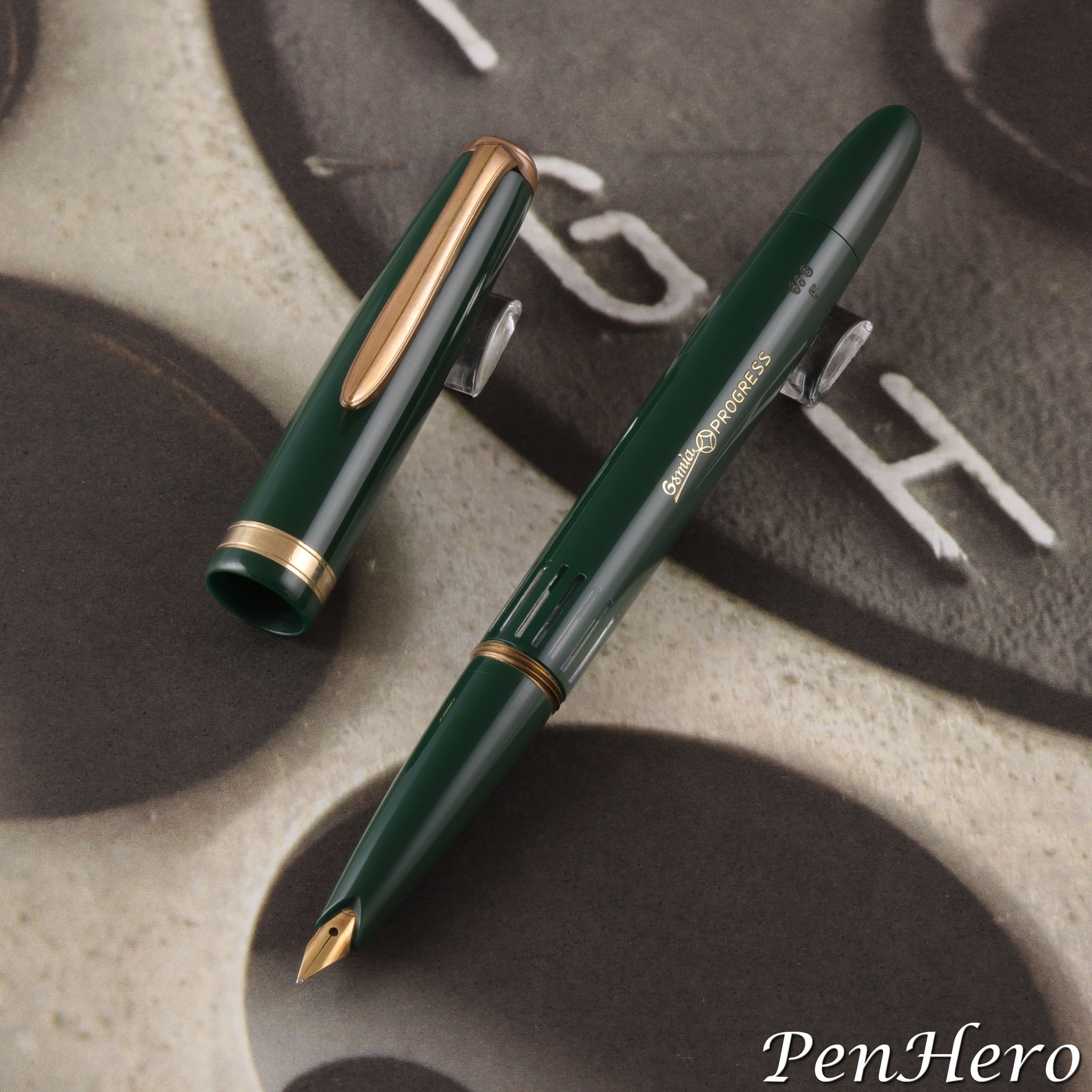 Osmia Progress 66G fountain pen in green c. 1957
Osmia Progress 66G fountain pen in green c. 1957
The Last Piston Fill Osmia
Sometimes a pen catches my eye because it’s really outside my wheelhouse. This is how I’ve managed to accumulate several interesting European and Japanese pens, primarily because of specific features, including the filling system, design, the nib, and the materials used. As a result, a few Osmia pens have made their way into my collection, and I’ll admit there are a few Osmias I don’t yet have that I have my eye on.
There’s very little primary information on Osmia in English and since I don’t speak or read German, I’m a bit limited in what I can research on my own about the company and brand. Therefore, much of this article is going to use secondary reference sources that I will document in the reference section below so the reader can review for more details.
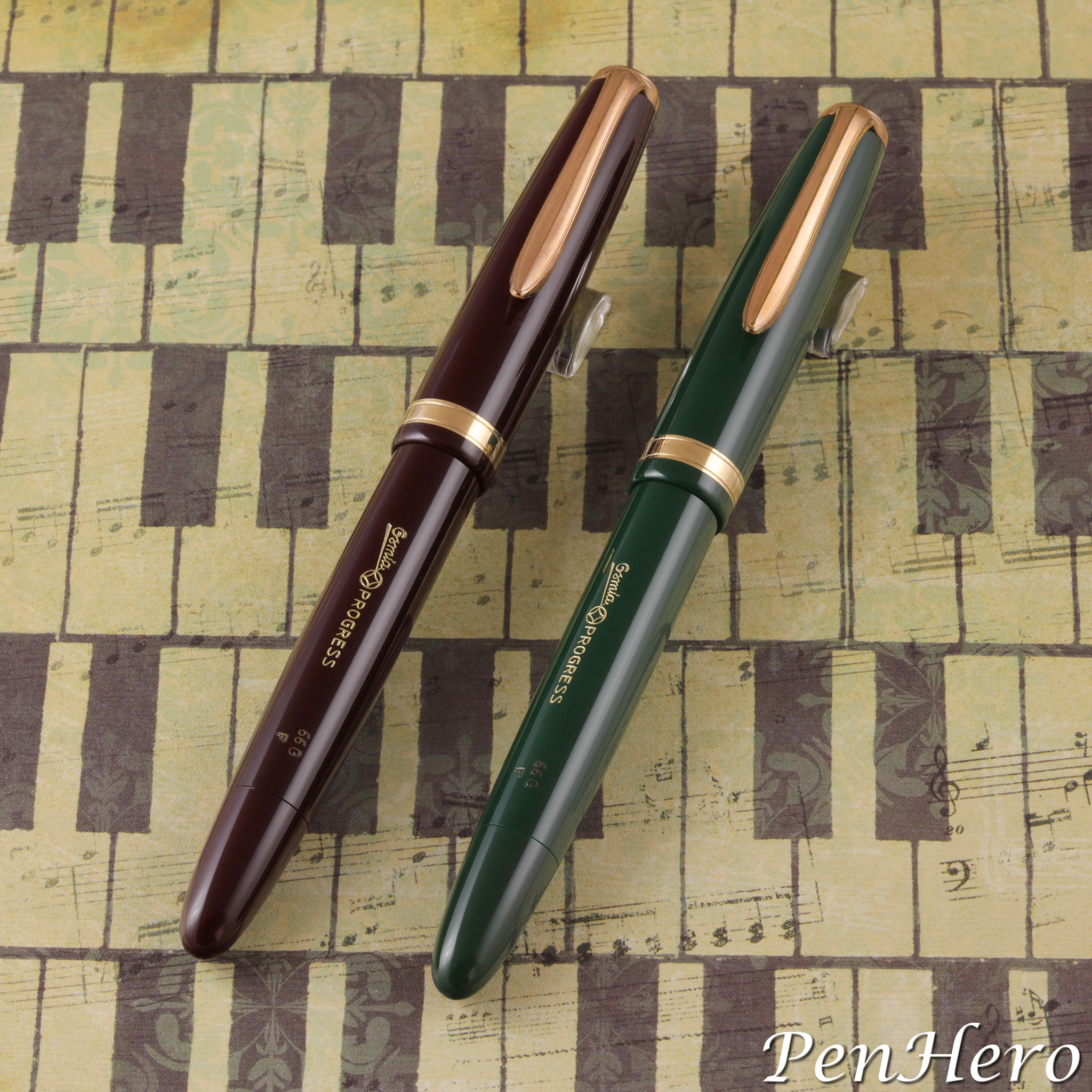 Osmia Progress 66G fountain pen in green and burgundy c. 1957
Osmia Progress 66G fountain pen in green and burgundy c. 1957
Osmia was founded in 1919 in Dossenheim, Germany, a town near Heidelberg. According to several sources, the name Osmia derives from osmium alloy, or osmiridium, a very hard metal alloy used for tipping nibs and at the beginning Osmia made their own nibs. The company was initially successful but fell on hard times by the late 1920s. At that time the Parker Pen Company was looking to expand its business into Europe and invested in Osmia for that purpose. This included Osmia manufacturing Duofold pens for the European market. Those pens are notable as they bear a dual Parker and Osmia imprint and some collectors specialize on them. This relationship lasted only until about 1930. In 1935 Faber-Castell began to slowly acquire shares in Osmia and by 1951 the full acquisition was completed.
Progress was a model name used by Osmia going back to the early 1930s. The name is found on streamlined button fillers, then vacumatic or diaphragm type fillers in several body styles, and finally on piston fillers in the 1950s.
Progress 66G
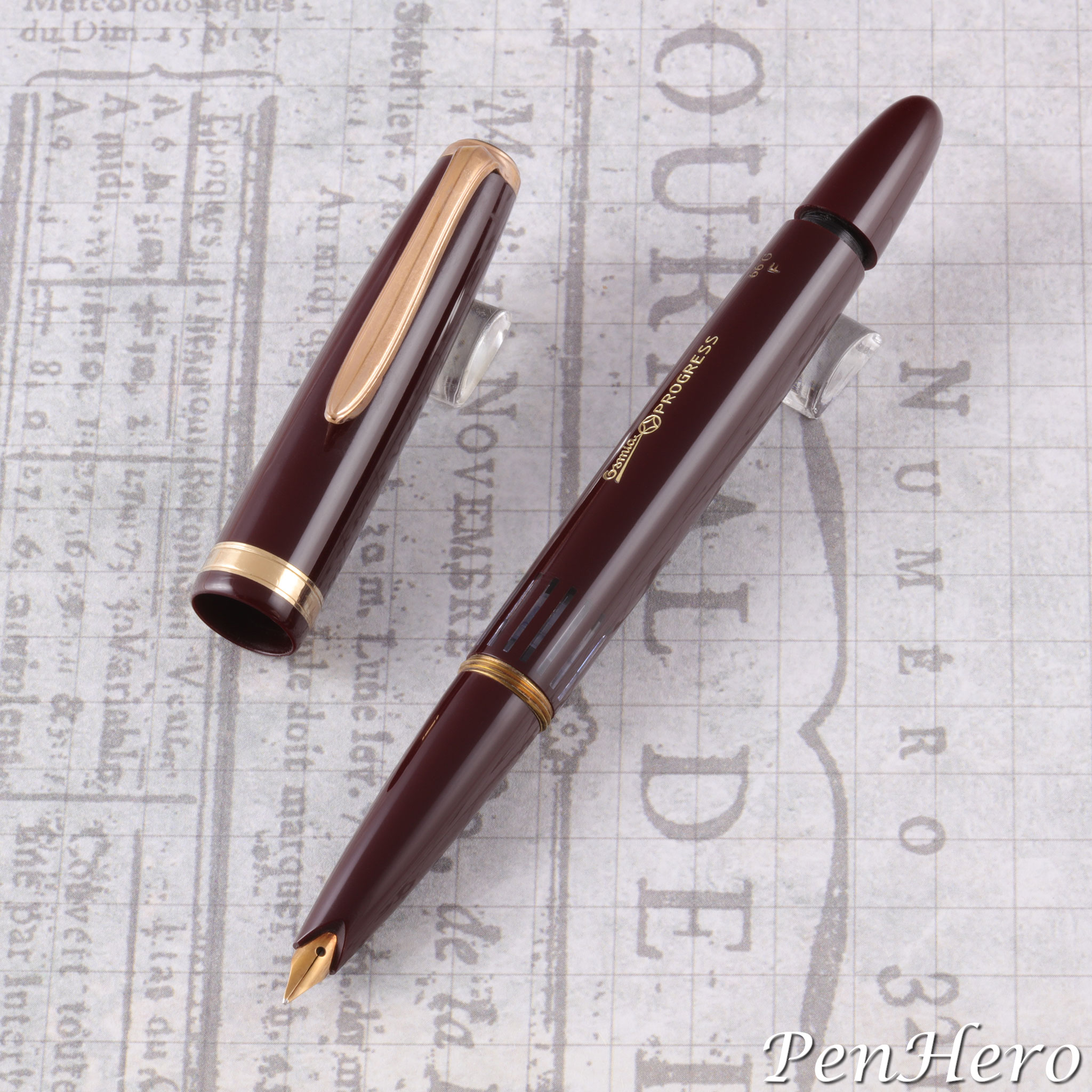 Osmia Progress 66G fountain pen in burgundy c. 1957
Osmia Progress 66G fountain pen in burgundy c. 1957
The Osmia Progress 66G was one of the last piston fill models to use both the Osmia and Progress names on the same pen as Faber-Castell phased out the Osmia brand in the early 1960s. Several sources date this model to about 1957 and later versions of the same pen without the Osmia name but with Faber-Castell markings are dated through about 1962.
As I don’t have primary information on this and the following models, I won’t do an identification guide, but will point out the features I am aware of from known examples.
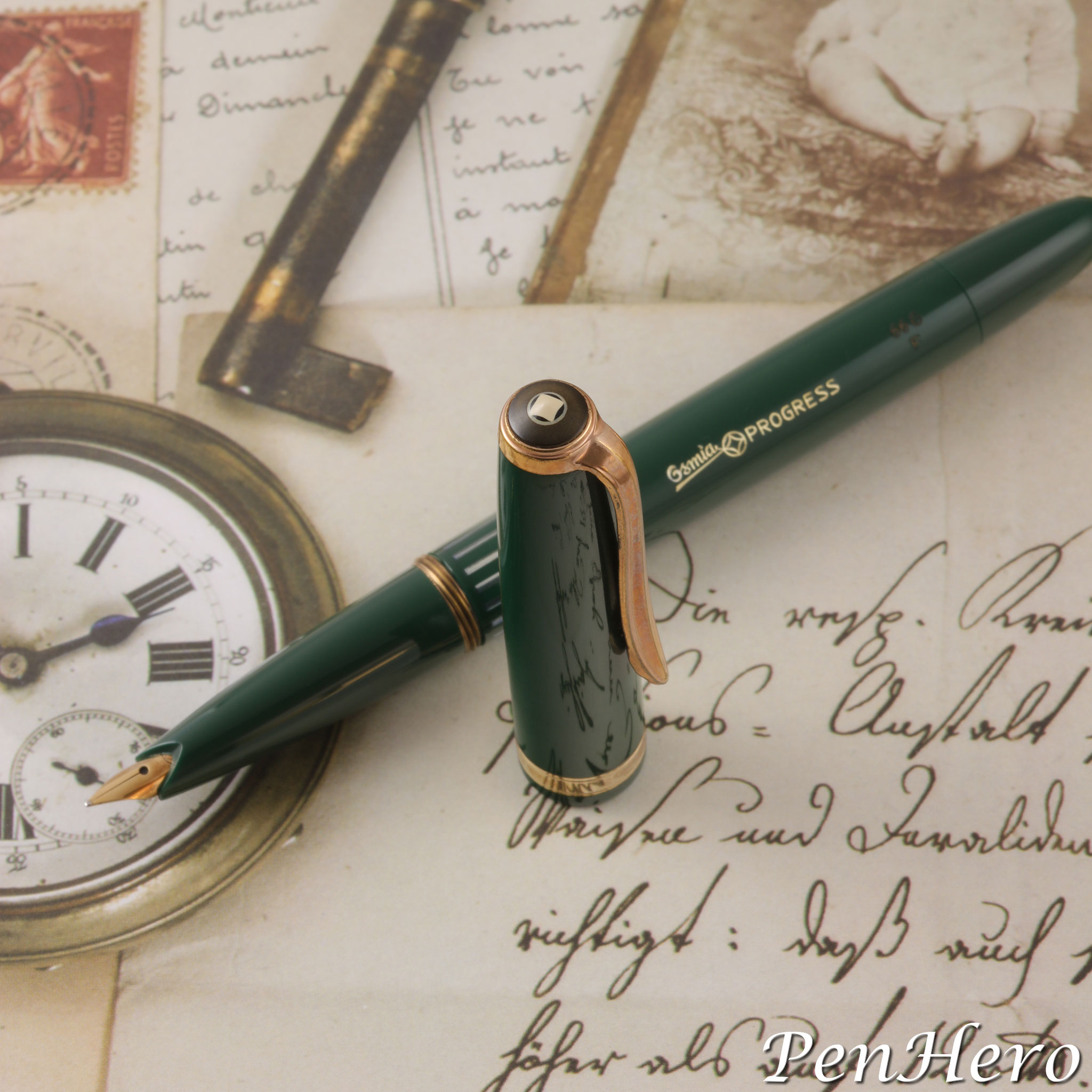 Osmia Progress 66G fountain pen in green c. 1957
Osmia Progress 66G fountain pen in green c. 1957
The Osmia Progress 66G is a plastic streamlined semi-hooded nib piston filler fountain pen with gold filled trim. The G in the model designation indicates the pen will have a 14 karat gold nib. This just under 5 3/16 inch long pen operates by turning the end cap on the barrel, which operates the plunger. Dipping the nib in ink and cycling the plunger fills the ink chamber in the barrel. The plunger can be seen traversing inside through the slotted ink view windows at the top of the barrel, which also shows the remaining ink level. This model has the Osmia white four point diamond inside a circle logo on a plastic cap top jewel. The barrel is stamped Osmia next to the Osmia logo next to PROGRESS, which is gold color filled. The model 66G over F, indicating a fine nib grade, is stamped at the base of the barrel near the piston knob. These are also gold color filled but are worn off from use on many examples. The 14 karat gold semi-hooded nib has only slightly visible markings, but they are stamped with the Osmia logo over 14K over 585. I've seen the nibs on both of these pens out of the hood. In this case part of the Osmia logo stamping is visible. This model was made in solid green, burgundy, and black. Several collectors I've read note that green is considered relatively rare.
Three Models / Two Versions
Having reviewed several of the 66G pens and other similar models I can point out some differences that infer which are early and later versions. I believe the examples shown in this article are the earlier version because they have no Faber-Castell markings and a plain cap band with single narrow engraved edge bands. I’ve only seen examples of model 66G and 77G in this version.
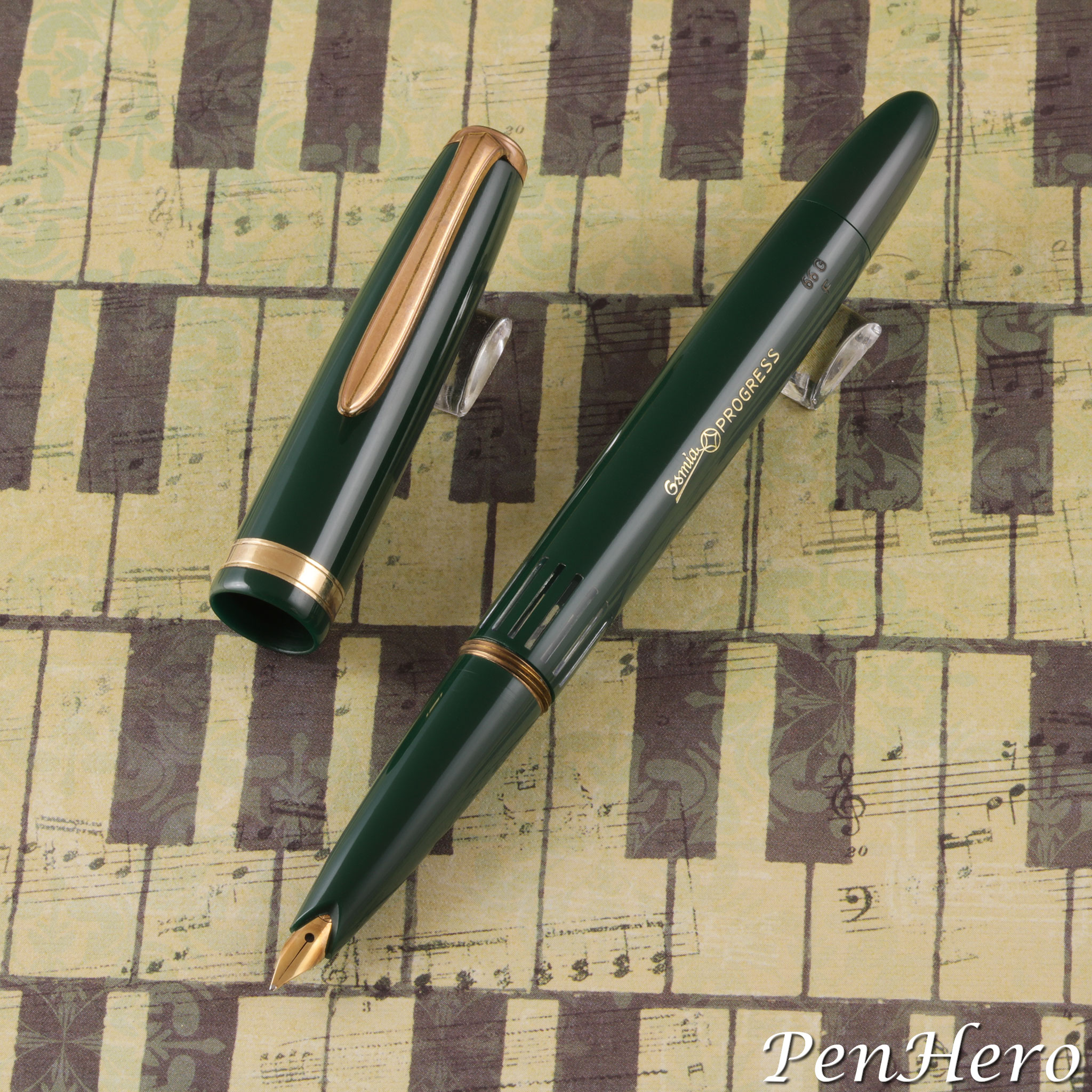 Osmia Progress 66G fountain pen in green c. 1957
Osmia Progress 66G fountain pen in green c. 1957
I am aware of three Osmia / Faber-Castell models, 55, 66, and 77, that are semi-hooded nib piston fill pens of this type. The model 66 and 77 examples I have seen are so similar that I am not yet certain what makes a 66 vs. a 77 and give the information I am presently am aware of below. I would very much like to know more on what differentiates them if the reader can help.
Model 55: Piston filler, semi-hooded nib, brushed stainless steel pull off cap, chrome plated cap top jewel, chrome plated clip and trim, plastic barrel with clear ink view slots, matching color nib section, and model number and nib grade stamped at the end of the barrel near the piston knob. Every example of this model I have seen has FABER-CASTELL Progress stamped on the cap lip and no Osmia markings, indicating a later, post-Osmia pen. It’s not clear to me that there is an early version model 55. Available with both gold plated stainless steel and 14 karat gold nibs. This model was made in green, burgundy, and black.
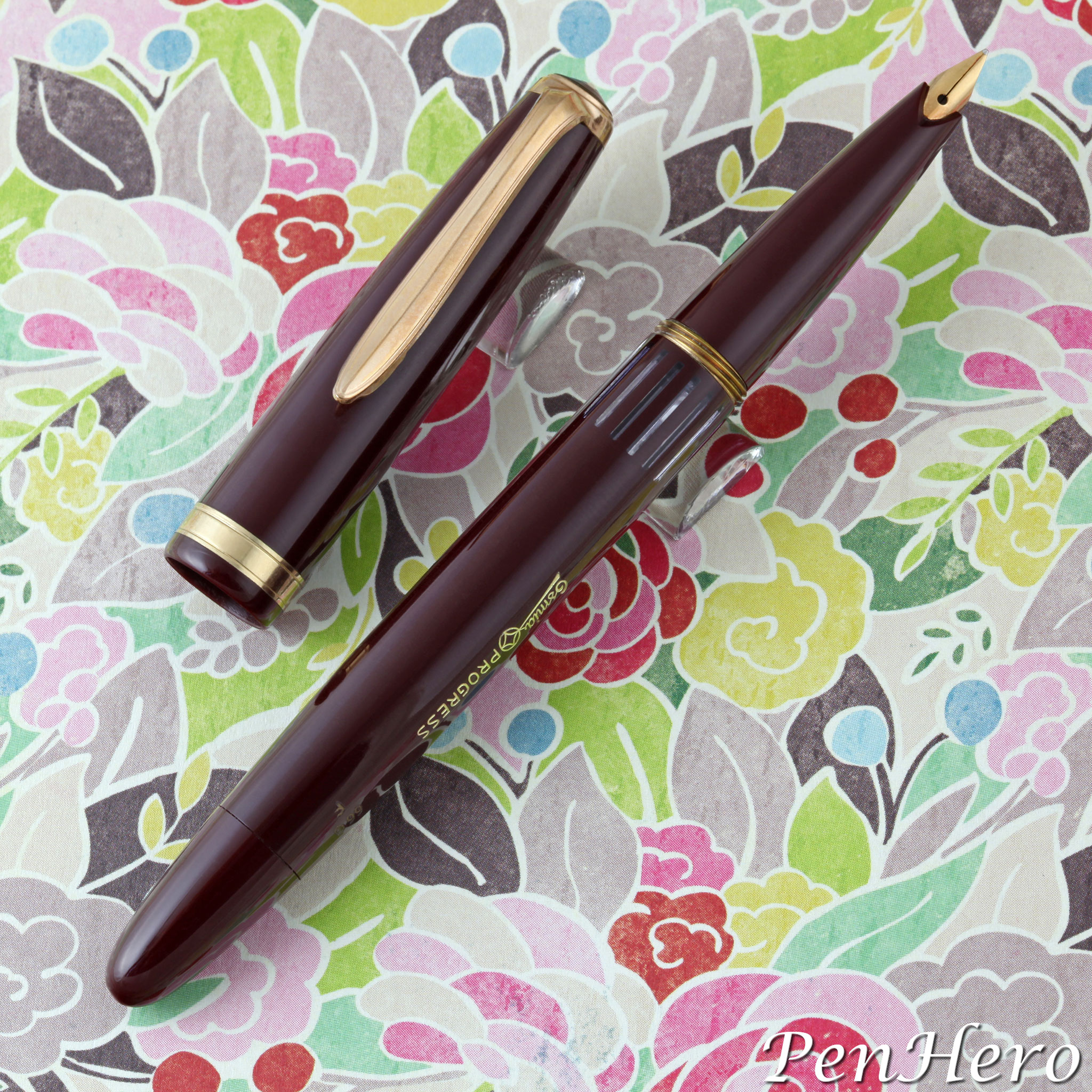 Osmia Progress 66G fountain pen in burgundy c. 1957
Osmia Progress 66G fountain pen in burgundy c. 1957
Model 66/77: Piston filler, semi-hooded nib, plastic cap, barrel and nib section the same color, cap is threaded, plastic cap top jewel, chrome plated clip and trim, top of barrel with clear ink view slots, and model number and nib grade stamped at the end of the barrel near piston knob. Early examples will have the Osmia logo in white on the cap top, Osmia next to the Osmia logo next to PROGRESS, all in gold, stamped on the barrel, and a plain cap band with two edge bands. Later examples will have a round, unmarked plastic cap top, FABER-CASTELL Progress stamped on the cap band, and no Osmia markings. Not having the opportunity to see a model 77 and compare it to the virtually identical model 66, I am at present not certain what the differences are. I’ve seen two examples of the later type with KLÖCKNER stamped on the barrel and I don’t know what that imprint means. Available with both gold plated stainless steel and 14 karat gold nibs. These models were made in solid green, burgundy, and black.
Based on observed nib grades stamped on these pens, I have seen fine, medium, broad, oblique broad and oblique double broad. Observed pens came in burgundy, green and black. I've seen examples of the all plastic pens with a matching pushbutton ballpoint pen and I would also expect a pencil was also available. The set came in a leather or leatherette zip close pen case.
Performance
I had two pens to choose from, both in near mint condition with some plating loss on the clips and both were serviced. I decided on the burgundy pen as a tester. Being all plastic, the pen is quite light in the hand. I decided not to post it as I did not want to put any marks on the barrel. It is an average size pen for the 1950s and early 1960s at about 5 3/16 inches capped. If I did decide to post the cap on the end of the barrel, it would sit above the barrel imprint. I’m not sure it would be secure without pressing it on a bit, which I am sure would mark the barrel. I found it long enough to write with without posting.
The fit and finish are very good. The plastic polishes up to a nice gloss. These were probably nice second tier pens when sold new, below Montblanc and Pelikan. The design is clean and understated. The clip design keeps the pen from being boring and looks like a distant cousin to a Pelikan clip. The clip plating shows some wear but looks like it would hold up in normal use. The clip is not very springy, so it probably won't clip well to a flannel shirt or a coat pocket.
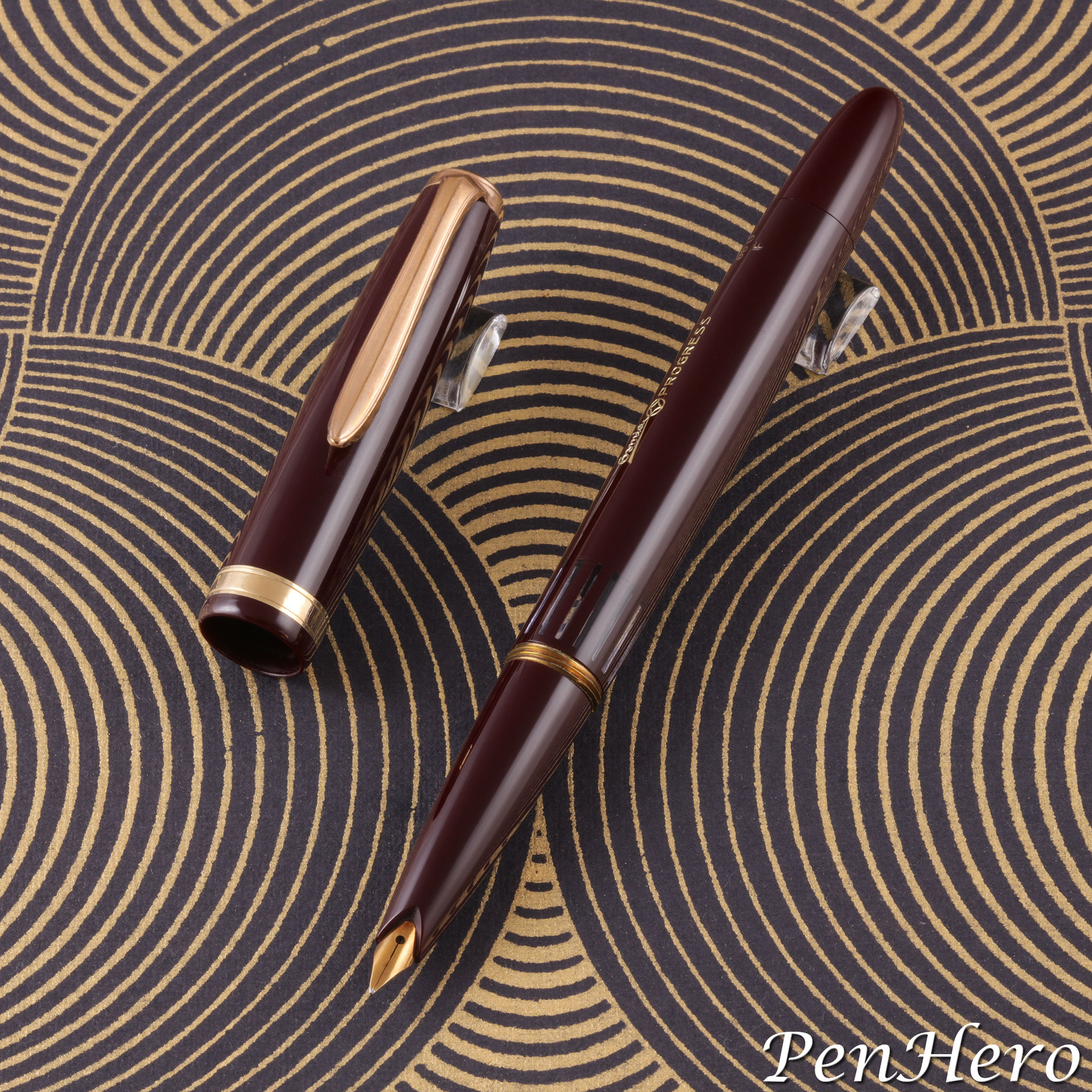 Osmia Progress 66G fountain pen in burgundy c. 1957
Osmia Progress 66G fountain pen in burgundy c. 1957
I dry wrote with the nib first and it was quite smooth on paper. I next filled the pen, dipping the nib section in ink and twisting the piston. I found the piston on both pens to be on the stiff side. This one filled nearly completely showing only about 1/8 of an inch remaining in the top of the ink view windows. The nib is a very firm fine and wrote nicely but was a bit dry on paper. I think it will need some ink flow adjustment. Based on wet and dry writing I would think this will prove a nice writer after a little nib work.
I would think a serviced and nib tuned Osmia 66G would make a really fun daily user. My only potential gripe is the piston unit is a bit stiff and I would worry about over torquing it when filling.
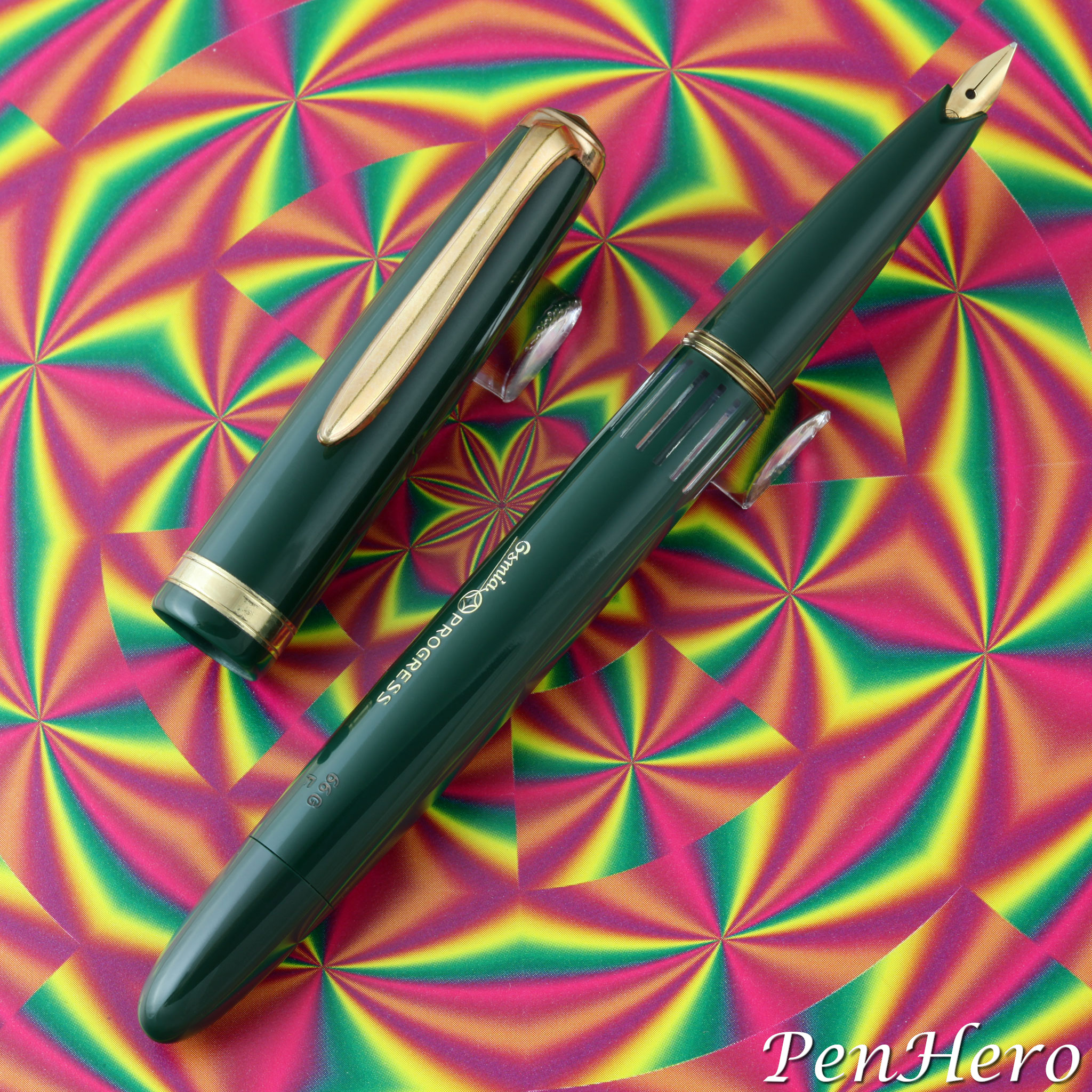 Osmia Progress 66G fountain pen in green c. 1957
Osmia Progress 66G fountain pen in green c. 1957
I don’t know about the European market, but in the USA, these are difficult pens to find in any condition though they don’t seem to command high prices. Some examples may have price and nib grade stickers or bands on them, which will increase the price. A set with a ballpoint and zip close case is unusual and will cost more. If I was pursuing collecting them, I would try to focus on best condition and serviced pens. Examples of all three models including both Osmia and Faber-Castell marked pens would make an interesting collection.
References
fountainpen.it Osmia article
Fountain Pens of the World by Andreas Lambrou, 1995 Zwemmer London, UK
Parker Duofold by David Shepherd and Dan Zazove, 2006 Surrenden Pens Limited, Brighton, UK
penboard.de Osmia listings
Interact
Comments on this article may be sent to the author, Jim Mamoulides


